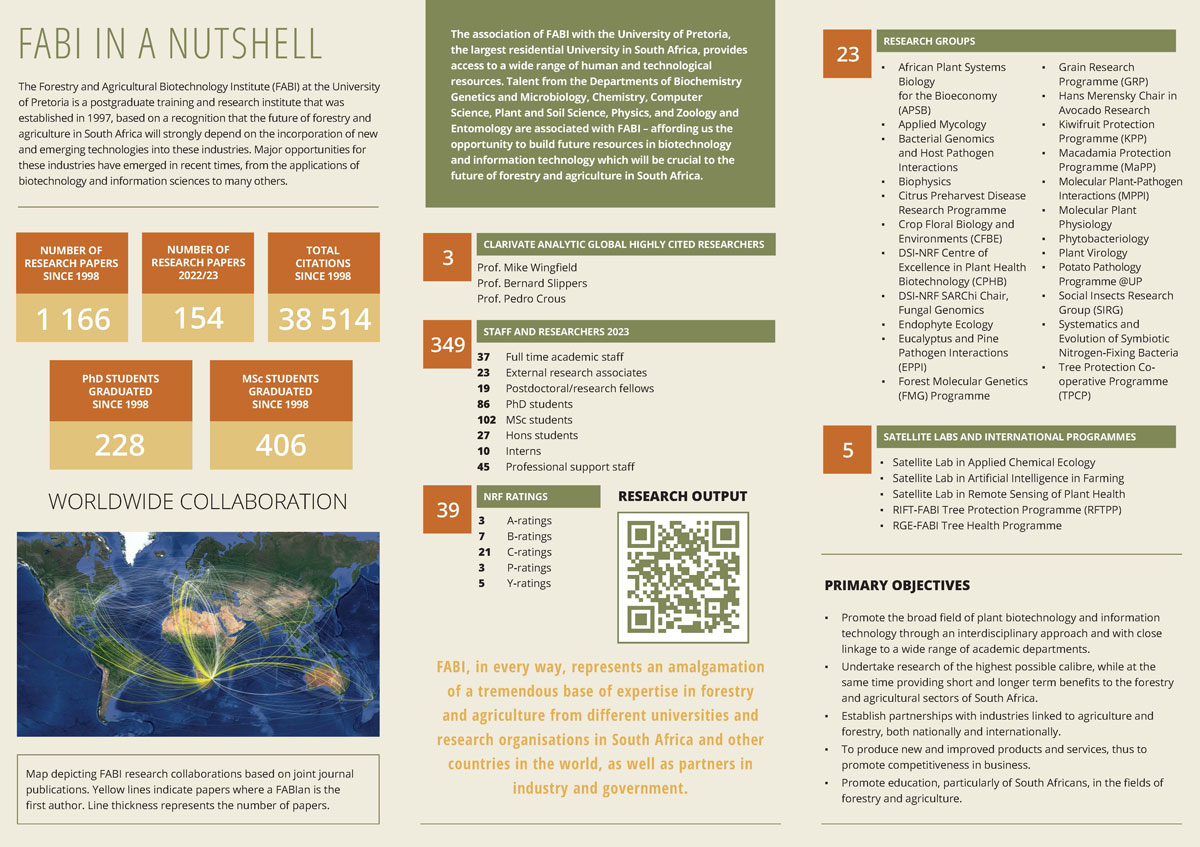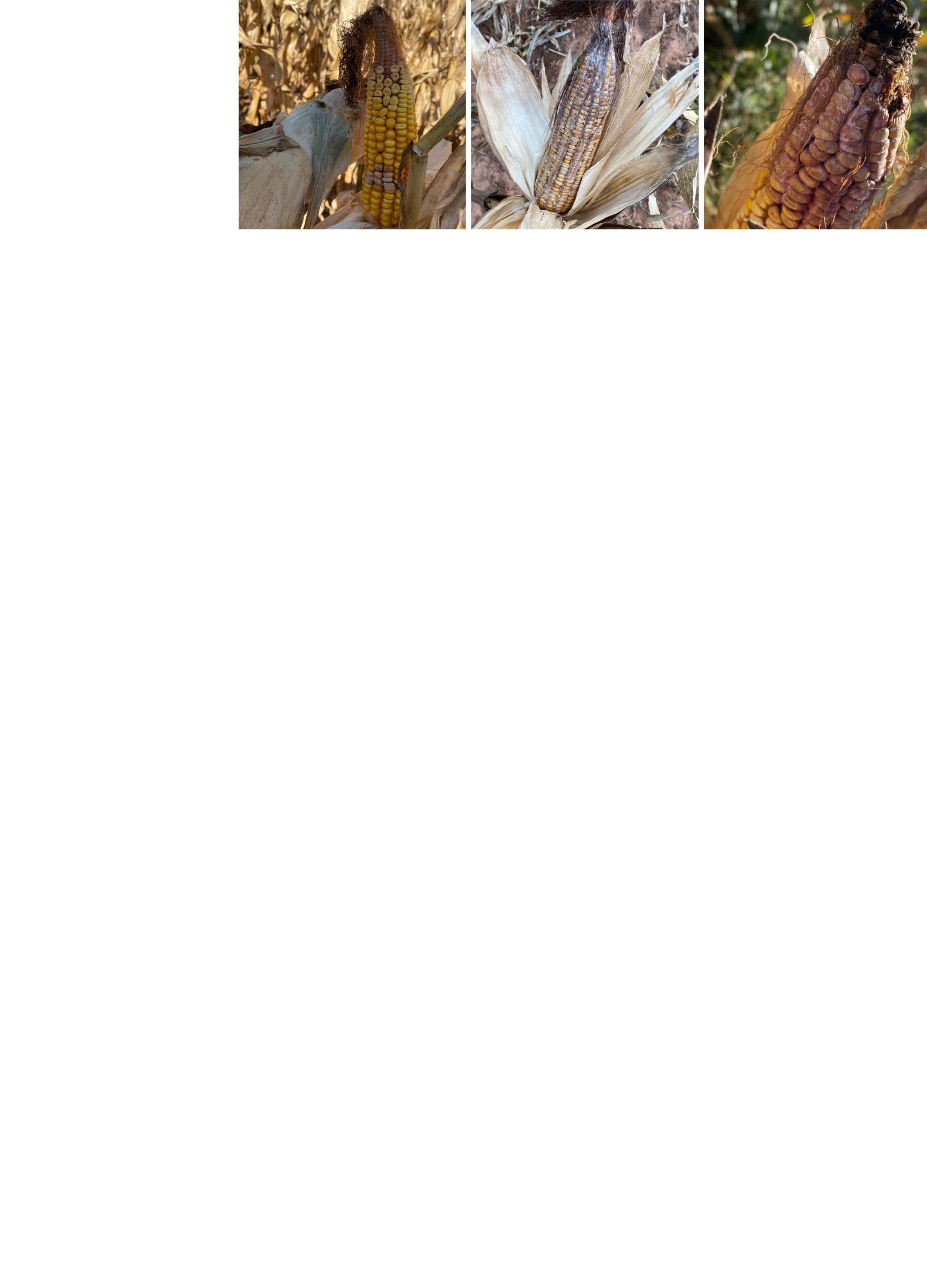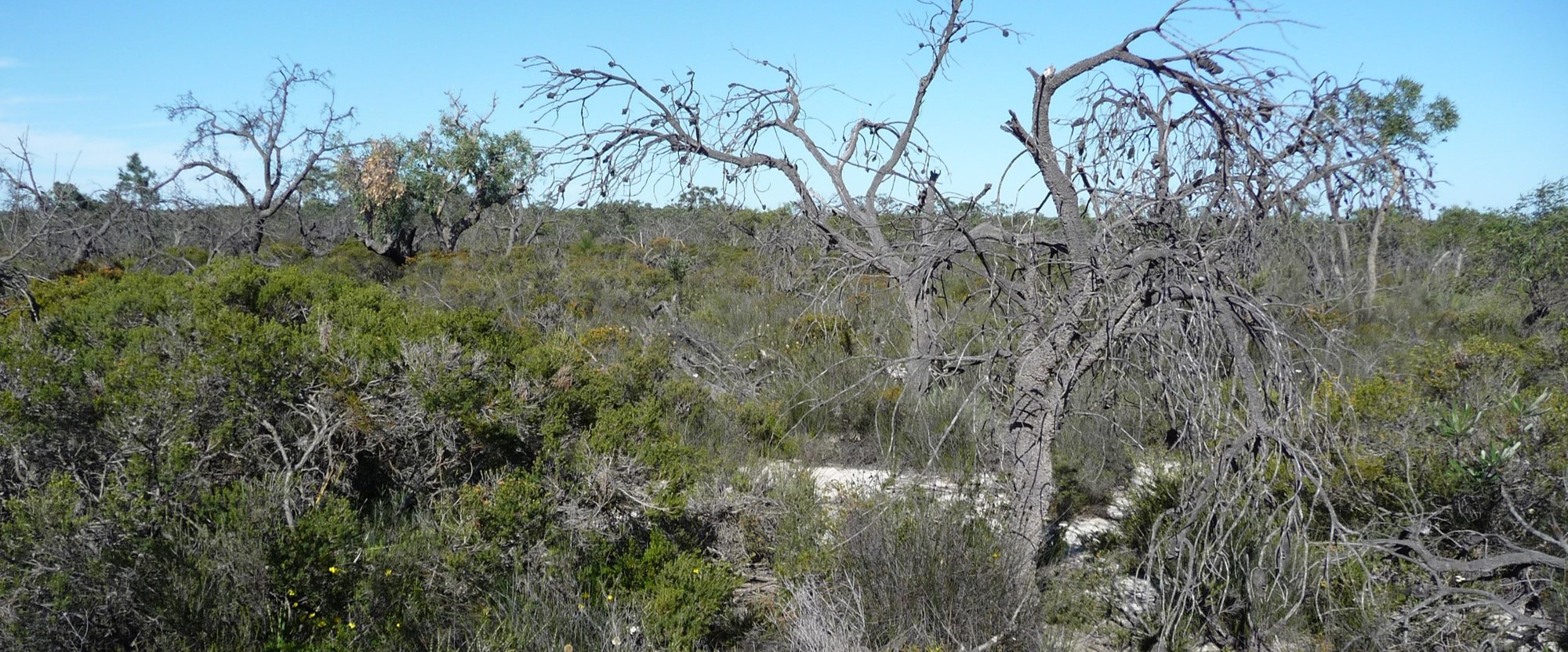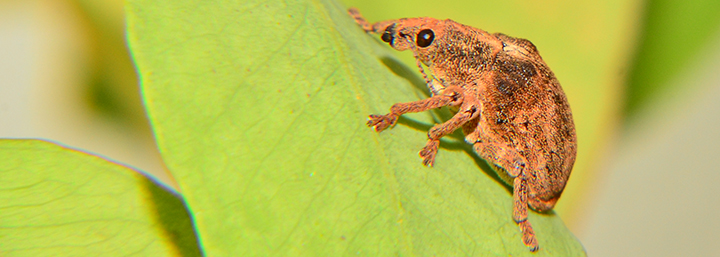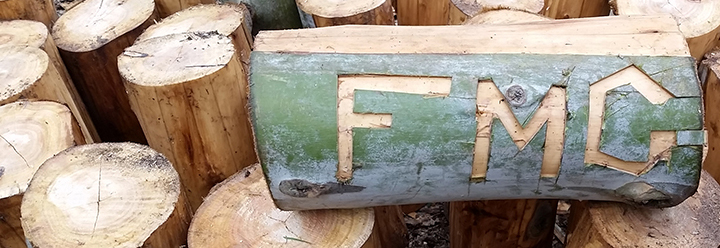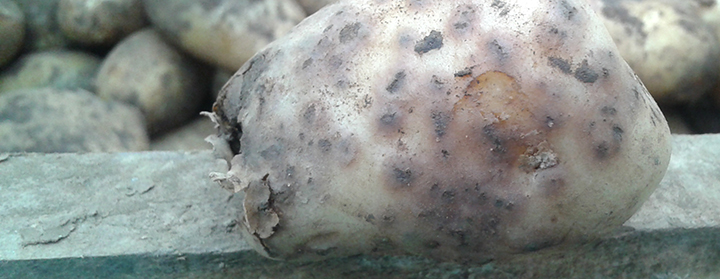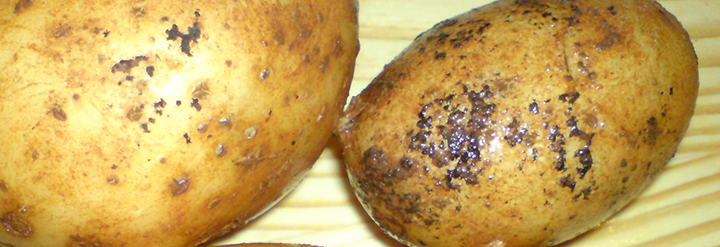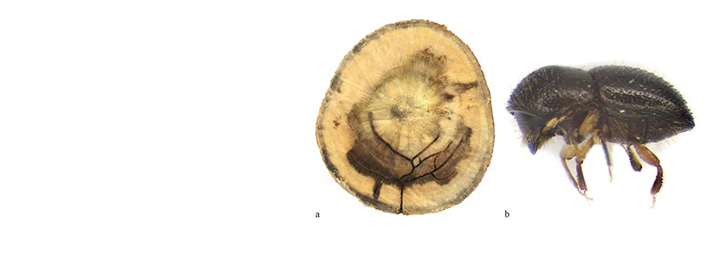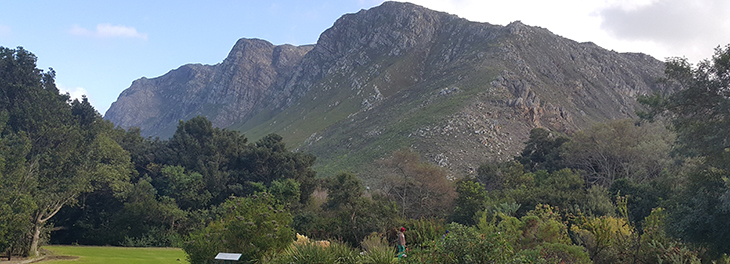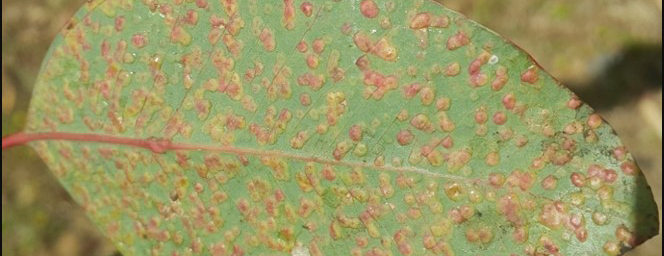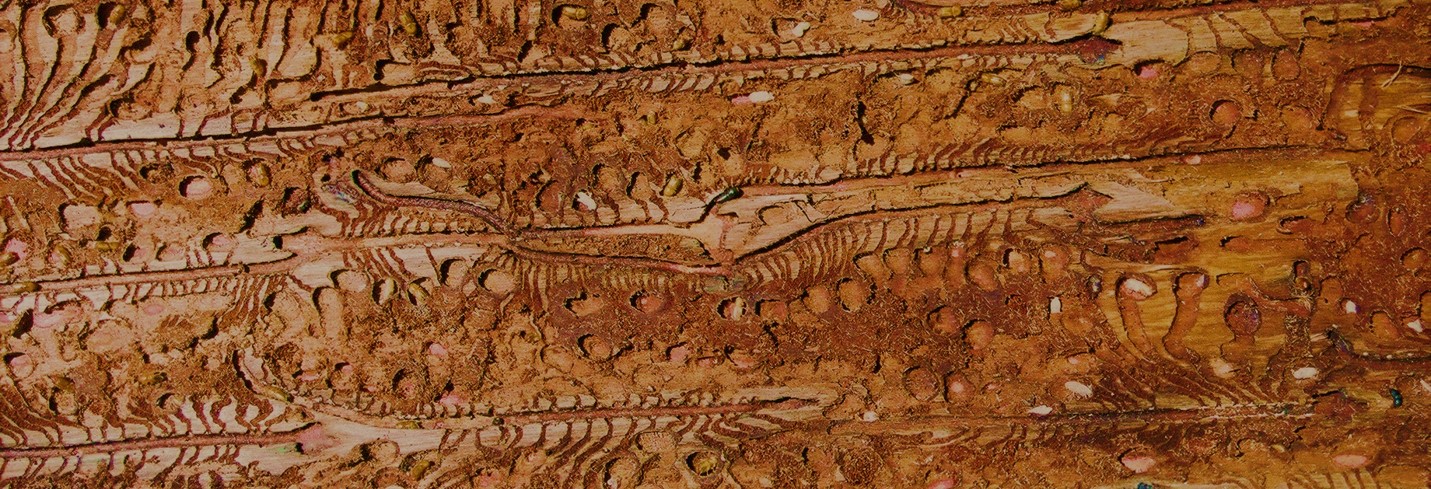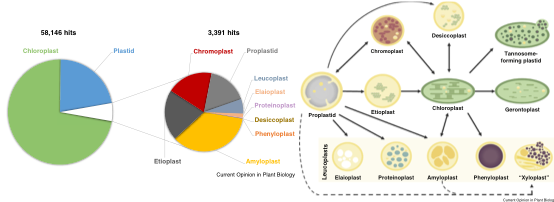Bose T,
Wingfield MJ, Brachmann A, Witfeld F, Begerow D,
Kemler M, Dovey S,
Roux J,
Slippers B,
Vivas M,
Hammerbacher A. (2025)
Removal of organic biomass in Eucalyptus plantations has a greater impact on fungal than on bacterial networks.
Forest Ecology and Management 586:122734.
10.1016/j.foreco.2025.122734
Woodward S, Amin H, Mártin-Gárcia J, Solla A, Diaz-Vazquez R, Romeralo C, Alves A, Pinto G, Herron D, Fraser S, Zas R, Doğmuş-Lehtijärvi HT, Bonello P,
Wingfield MJ, Witzell J, Diez JJ. (2025)
Host-pathogen interactions in the Pine-Fusarium circinatum pathosystem and the potential for resistance deployment in the field.
Forest Pathology 55(2):e70020.
10.1111/efp.70020
Hulcr J,
Barnes I, Barnes M, Gazis R,
Hammerbacher A, Johnson AJ, Lynch S,
Lynn K, Marais GC, Mayers CG,
Nel W, Villari C,
Wingfield BD,
Wingfield MJ. (2025)
From forest to fungus: A roadmap to bark beetle mycobiome research.
Phytoparasitica 53(45)
10.1007/s12600-025-01246-x
Bose T,
Roux J, Titshall L, Dovey SB,
Hammerbacher A. (2025)
Mulching of post-harvest residues and delayed planting improves fungal biodiversity in South African Eucalyptus plantations and enhances plantation productivity.
Applied Soil Ecology 210:106091.
10.1016/j.apsoil.2025.106091
Wychkuys KA, Giron E, Hyman G, Barona E, Castro-Llanos FA, Sheil D, Yu L, Du Z,
Hurley BP,
Slippers B,
Germishuizen I, Bojacá CR, Rubiano M, Sathyapala S, Verchot L, Zhang W. (2025)
Biological control protects carbon sequestration capacity of plantation forests.
Entomologia Generalis
10.1127/entomologia/2025/3015 
Harikrishnan K, Rajeshkumar KC, Patil PM, Jeewon R,
Visagie CM. (2025)
Aspergillus dhakephalkarii and A. patriciawiltshireae spp. nov., two new species in Aspergillus sect. Nigri ser. Japonici (Eurotiales, Aspergillaceae) from India.
Phytotaxa 695:57–79.
10.11646/phytotaxa.695.1.2
Coertze S, Visagie CM, Rose L,
Slippers B, Mostert D, Makhura T, de Villiers D, Basson E, Coetzee B,
Read D. (2025)
First report of Clavibacter nebraskensis, causing Goss’s bacterial leaf blight on maize (Zea mays L.) in South Africa.
Plant Disease
10.1094/PDIS-01-25-0164-PDN 
Mapfumo P, Archer E, Swanevelder ZH,
Wilken M,
Creux N,
Read DA. (2025)
Plant Pathology.
Genomic Characterisation of Bidens mottle virus in South Africa and an Assessment of the Impact on Helianthus annuus (Sunflower) in an Open Field Setting
10.1111/ppa.14089
Brasier CM, Grünwald NJ, Bourret TB, Govers F, Scanu B, Cooke DEL,
Bose T, Hawksworth DL, Abad ZG, Albarracin MV, Alsultan W, Altamirano-Junqueria AE, Arifin AR, Arnet MJ, Aumentado HDR, Bakonyi J, Belisle WH, Benigno A, Bienapfl JC, Bilodeau GJ, Blair JE, Botella L, Brandano A, Cacciola SO, Carbone I, Castroagudin VL, Chaendaekattu N, Consford JD, Corcobado T, Covey PA, Daniels HA, Deidda A, Dorrance AE, Dort EN, Drenth A, Drizou F, Evangelisti E, Fajardo SN, Fang Y, Ference CM, Frankel SJ, Goss EM, Guest DI, Hardy GESJ, Harris ARH, Hawku MD, Heungens K, Hong C, Horner IJ, Horta Jung M, Iyanda OJ,
Jamieson B, Jeffers SN, Judelson HS, Junaid M, Kalogeropoulou E, Kamoun S, Kang S, Kasuga T, Kudláček T, LeBoldus J, Lee CA, Li D, Llanos AK, Lopez-Nicora HD, Machado H, Di San Lio GM, Maia C, Mandal K, Manosalva P, Martin FN, Matson MEH, McDougal RL, McDowell JM, Michelmore RW, Milenković I, Moricca S, Mostowfizadeh-Ghalamfarsa R, Nagy Z�, Nikolaeva EV, Ortega-López P,
Paap T, Parada-Rojas CH, Peduto Hand F, Perez-Sierra A, Pettersson M, Prasad P, Puig AS, Raco M, Rajput NA, Ristaino JB, Rooney-Latham S, Seidl MF, Shamoun SF, Solla A, Spies CFJ, Sudermann MA, Swiecki TJ, Tian M, Tripathy S, Uematsu S, Van Poucke K, Vichou AE, Walter M, Webber JF, Williams NM,
Wingfield MJ, Yadav D, Yang X, Jung T. (2025)
Preserving the Biologically Coherent Generic Concept of Phytophthora, ‘Plant Destroyer’.
Phytopathology
10.1094/PHYTO-11-24-0372-LE
Stazione L, Corley JC,
Allison JD,
Hurley BP, Lawson SA, Lantschner MV. (2025)
Novel associations among insect herbivores and trees: Patterns of occurrence and damage on pines and eucalypts.
Ecological Applications 35:e70018.
10.1002/eap.70018
Townsend G, Hill M,
Hurley BP, Roets F. (2025)
Escalating threat: increasing impact of the polyphagous shot hole borer beetle, Euwallacea fornicatus, in nearly all major South African forest types.
Biological Invasions 27
10.1007/s10530-025-03551-2 
Makunde PT,
Slippers B,
Bush S,
Hurley BP. (2025)
Host specificity and host stage preference of Psyllaephagus species (Hymenoptera: Encyrtidae) towards invasive eucalypt psyllids (Hemiptera: Aphalaridae).
Agricultural and Forest Entomology :1-13.
10.1111/afe.12679
D’Angelo D, Hu H, Lahoz E, Risteski J,
Steenkamp E T, Viscardi M,
van der Nest M A, Wu Y, Yu H, Zhou J, Karandeni Dewage C S, Kotta-Loizou L I, Stotz H U, Fitt B D L, Huang Y, Hu Y, Kiss L, Sorrentino R,
Nkomo T, Zhou X, Vaghefi N,
Sonnekus B,
Bose T, Cerrato D, Cozzolino L,
Creux N, D’Agostino N,
Fourie G, Fusco G,
Hammerbacher A, Idnurm A,
Wingfield BD. (2025)
IMA GENOME - F20 A draft genome assembly of Agroathelia rolfsii, Ceratobasidium papillatum, Pyrenopeziza brassicae, Neopestalotiopsis macadamiae, Sphaerellopsis filum and genomic resources for Colletotrichum spaethianum and Colletotrichum fructicola.
IMA Fungus 16:e141732.
10.3897/imafungus.16.141732
Espach A, Esterhuizen L, Africander N, Thiart S,
Read DA, Pietersen G. (2025)
First report of pepper ringspot virus on potato (Solanum tuberosum) in South Africa.
Journal of Plant Pathology
10.1007/s42161-025-01887-1
Coelho MA, David-Palma M,
Aylward J,
Pham NQ,
Visagie CM,
Fuchs T,
Yilmaz N, Roets F, Sun S, Taylor JT,
Wingfield BD, Fisher MC,
Wingfield MJ, Heitman J. (2025)
Decoding Cryptococcus: From African biodiversity to worldwide prevalence.
PLOS Pathogens 21:e1012876.
10.1371/journal.ppat.1012876
Botes J, Ma X, Chang J, Van de Peer Y,
Berger DK. (2025)
Flavonoids and anthocyanins in seagrasses: implications for climate change adaptation and resilience.
Frontiers in Plant Science 15(1520474):1-17.
10.3389/fpls.2024.1520474
Mangani R, Mazarura J, Matlou S, Marquart A, Archer E,
Creux N. (2025)
The impact of past and current district-level climatic shifts on maize production and the implications for South African farmers.
Theoretical and Applied Climatology 156:109.
10.1007/s00704-024-05334-6
Martin G, Canavan K, Chikowore G, Bugan R, De Lange W, du Toit B, Harding G, Heath R, Hill M,
Hurley BP, Ivey P, Muir D, Musedeli J, Richardson DM,
Slippers B, Stafford L, Turner A, Watson K, van Wilgen BW. (2025)
Managing wilding pines in the Cape Floristic Region, South Africa: Progress and prospects.
South African Journal of Botany 177:377-391.
10.1016/j.sajb.2024.12.011 
Hurley BP, Lawson S,
Slippers B. 2025.
Biological Control of Insect Pests in Plantation Forests. Springer: Switzerland.
Mangani R, Archer E, Engelbrecht C, Bellochi G, Mukiibi A,
Creux N. 2025.
The Impact of Climate Change on Crop Production and Food Security: A South African Perspective. In:
Climate Change, Food Security, and Land Management. Leal Filho W, Matandirotya N, Yayeh Ayal D, Luetz JM, Borsari B. (eds). Springer, Cham, Switzerland, pp 1-12.
Goundar P,
Slippers B,
Hurley BP, Lawson SA. 2025.
Classical biological control of bark and wood borers in Pinus plantations. In:
Biological Control of Insect Pests in Plantation Forests.
Hurley BP, Lawson SA,
Slippers B. (eds). Springer, Cham, Switzerland, pp 321-338.
Hurley BP,
Slippers B, Lawson SA. 2025.
Biological control in plantation forests: trends and opportunities. In:
Biological Control of Insect Pests in Plantation Forests.
Hurley BP, Lawson SA,
Slippers B. (eds). Springer, Cham, Switzerland, pp 3-18.
Slippers B, Fitza KNE, Garnas JR. 2025.
Genetic diversity should be considered in biological control programmes in plantation forestry. In:
Biological Control of Insect Pests in Plantation Forests.
Hurley BP, Lawson SA,
Slippers B. (eds). Springer, Cham, Switzerland, pp 71-94.
Wondafrash M,
Slippers B,
Hurley BP. 2025.
Accidental introductions of natural enemies in plantation forests. In:
Biological Control of Insect Pests in Plantation Forests.
Hurley BP, Lawson SA,
Slippers B. (eds). Springer, Cham, Switzerland, pp 161-190.
Oostlander AG, Elfstrand M, Oliva J, Stenlid J, Well L,
Grober C, Klawonn F, Brandt U, Becker Y,
Slippers B, von Bargen M, Brodde L,
Fleißner A. (2024)
Development of a molecular genetics and cell biology toolbox for the filamentous fungus Diplodia sapinea.
PLoS ONE 19:e0308794.
10.1371/journal.pone.0308794
Balocchi F, Sanfuentes E. (2024)
Fungal pathogens on Scotch broom (Cytisus scoparius) and French broom (Genista monspessulana) from Chile.
Forest Pathology 54
10.1111/efp.70004


